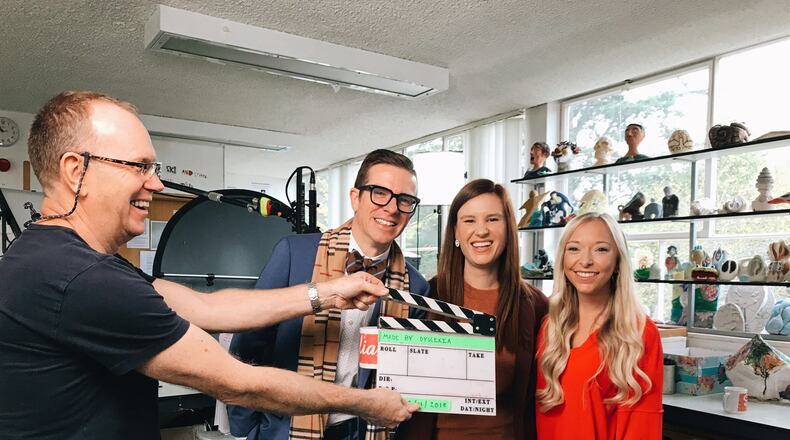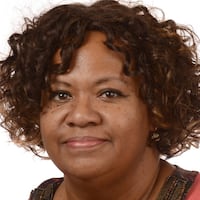The Schenck School in Atlanta, the oldest school in the United States dedicated to educating students with dyslexia, recently joined a global movement challenging the age-old idea that people with dyslexia are flawed and need to be fixed.
The school has partnered with Microsoft and Made By Dyslexia, a global charity led by successful (and famous) dyslexics, to share their expertise through a series of videos aimed at parents and educators to help them recognize and support dyslexia.
“We want to be able to democratize the support and help teachers all around the world to be able to understand what dyslexia is, to understand the huge value of dyslexic thinking and the importance of identifying it and supporting it early,” said Kate Griggs, founder and CEO of Made by Dyslexia.
In recent years, educators and scientists who have studied the condition have said dyslexia is a difference in the brain that affects how it processes information. The global partnership, which also includes the Millfield School, the oldest school for dyslexics in the United Kingdom, has a goal to empower every person with dyslexia to reach their potential and they've created tools to help make this happen.
The videos have been turned into computer-based learning modules to raise awareness about dyslexia. The program was recently unveiled at the world’s largest education technology conference, BETTS, and is now part of the Microsoft Educator Platform available at no cost to educators, parents and students.
Dyslexia affects how language is heard, spoken, read and spelled and researchers believe it affects one in five individuals. Because it is genetic, multiple children in a family may be dyslexic learners.
The hour-long “class” provides insights into dyslexia. Staffers from the two schools talk about how to identify dyslexia, the importance of proper types of education for students with dyslexia and changing perceptions about the condition. Depending upon the level, many people have gone most of their lives without a diagnosis.
“Exposure to a program like this will help parents and educators to recognize red flags,” said Hart Stuck, a fifth grade teacher at The Schenck School who is also in the videos. “It empowers them to know what to look for and realize that there are ways to help their children and their students.”
The issue is so prevalent that the Georgia Legislature has a bill proposed to provide funding to test all children in pre-k through second grade.
International celebrities such as Orlando Bloom and Keira Knightley, as well as billionaire entrepreneur Richard Branson provide role models in the videos. They want to show that dyslexics can do anything, they just need the proper training.
“It’s kind of our super power,” said Bloom.
It also shows there are strengths as well as challenges in dyslexic brain functions.
Modules with titles such as “Dyslexic thinking skills” and “Dyslexic advantage” are crafted to reveal that people with dyslexia can be highly creative, good problem-solvers, three-dimensional thinkers, innovators, and influencers—all valuable skills.
"Some of the greatest inventions and breakthroughs in our history have come from a dyslexic mind's refusal to accept the status quo,"said Josh Clark, head of school for the The Schenck School, which was founded by David Schenck in the 1960s as a tutoring program for students with reading challenges.
The lessons are so straight-forward, you don’t have to be an educator to grasp the concepts.
“It’s quick and user-friendly and the longest video is maybe 10 minutes,” said Clark. “Each one builds off each other so that it makes sense.”
While reading, writing, and spelling can prove to be difficult for people with dyslexia, they are often fantastic storytellers and display strong verbal reasoning skills. When it is appropriate, students with dyslexia benefit from showing their learning in ways that capitalize on their strengths. Sometimes, an accommodation such as extra time or a different setting, can assist students in showing their learning.
That’s why the last modules on identification and classroom inclusion are so critical.
Marissa Greider has a fourth grade child at The Schenck School and she said she wished the Microsoft program had been around years ago. She said her child went from bright, curious and inquisitive to dreading school.
“It was heartbreaking to watch my daughter as she struggled with her homework in kindergarten,” she said. “These videos are great resources for parents as they help identify red flags and offer tips to support the dyslexic learner. Equally as important, these videos help show children they are not alone and have tremendous innate potential by sharing the perspective of other very successful dyslexics.”
To view the Dyslexia Awareness class, go to www.education.microsoft.com and search for Made by Dyslexia.
About the Author
The Latest
Featured



